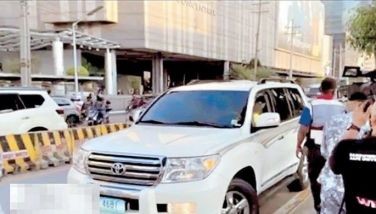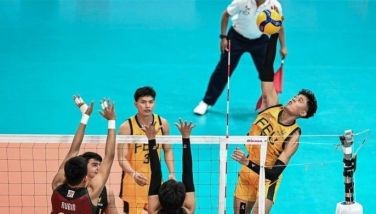Private schools’ Apocalypse

After a month-long wait for internet connection, a struggle with a portable WiFi and a belated realization that his first-ever laptop needed the installation of an original Microsoft Office Home & Student software, a fourth grader I know is now actually finding distance learning fun.
Classes in his mid-priced private elementary and high school began on Aug. 24 – the original target opening date set by the Department of Education (DepEd) for the public school system.
The boy’s mother went to the school to pick up textbooks and other learning materials after paying the tuition. But the boy himself has not gone out of his home; their classes are fully online.
His generation can handle distance learning with eyes closed. But the children need reliable internet connectivity and of course the necessary gadgets.
We know how much those gadgets can cost. The requisite Microsoft set alone, which cost P5,500 in legit outlets in the shopping malls at the start of the lockdowns, can now cost up to P6,999. Monthly internet service combined with landline is nearly P1,800.
Such expenses can be offset by savings in transport costs, snack allowance and, in some schools, uniform expenses if there were face-to-face classes. But the expenses are still beyond the means of millions of parents, especially those who have lost their jobs in the pandemic.
The boy’s class has grown smaller, but only slightly, so their school is fortunate that most of its students managed to enroll for this new academic year.
Obviously, the school also has one other indispensable requirement for blended learning: teachers with sufficient training for the tech-centered pandemic normal in formal education.
* * *
Not all schools can meet this requirement. Joseph Noel Estrada, managing director of the Coordinating Council of Private Educational Associations or COCOPEA, wishes that private schools could be given more flexibility in designing the learning modes for their students.
In June, Estrada had said private schools would lose a combined P30 billion with every month of delay in the school opening.
When classes were finally allowed to open, however, the ban on face-to-face classes meant a scramble to adapt to blended learning, for educators and students alike. And for both teachers and students, the challenge was simply overwhelming for millions, whether in terms of skills or resources.
Estrada acknowledged that the challenge is greatest for the lower levels, starting in kindergarten.
He is still hoping that the government will allow limited face-to-face classes in areas with low risk of COVID transmission, and with the strict implementation of health safety protocols for distancing and disinfection. Facing “The Chiefs” last Wednesday on OneNews / TV5, Estrada noted that face-to-face classes have resumed in neighboring countries.
But those countries have succeeded in significantly slowing down COVID transmission. So for now, President Duterte’s policy stands: no COVID vaccine, no face-to-face classes.
* * *
As of this week, nearly 900 private elementary and high schools have notified the DepEd that they won’t be opening this school year because of dismal enrollment. Whether the shutdowns will be permanent is uncertain.
The schools are mostly in the industrial region of Calabarzon and in Metro Manila, so the problem can’t be just internet connectivity. It’s pandemic-induced economic hardship.
Thousands of students have transferred from private to public schools. The figures are still in flux because enrollment continues in the public school system. But the figure for private schools can run into hundreds of thousands by the time public schools open on Oct. 5.
Education officials say about four million students could be left behind for one school year due to their inability to adapt to blended learning.
Will the private schools ever get their students back? The recession is expected to persist at least until the first half of 2021. Household budgets will remain tight, and parents may opt to continue with free tuition for their children, available in public schools, while rebuilding pandemic-ravaged livelihoods.
What happens then to the thousands of teachers in the shuttered private schools? They can’t spend the entire academic year upskilling to meet the requirements of blended learning, while receiving only an emergency allowance from their employers. It’s doubtful that owners of those shuttered schools can even afford to give their displaced teachers any kind of allowance for a year.
Other sectors badly hit by pandemic restrictions can now gradually reopen. This is not possible for schools: either they open at the scheduled date or they must close down for the entire academic year.
* * *
COCOPEA’s Estrada is hoping the private schools will be included in the economic stimulus package under the Bayanihan to Recover as One Act.
Competition for a slice of Bayanihan 2, however, is going to be stiff. Even the Small Town Lottery operators are pointing out that the six-month suspension of STL has meant livelihood losses for approximately 200,000 people.
STL operations, however, are gradually resuming in selected areas. Other economic sectors including one of the worst hit, travel and tourism, are also slowly reopening.
This is not possible for schools that have been forced to shut down. What will their teachers do? The entire planet is in recession so they can’t seek employment overseas even as maids – as many of our public school teachers did before their salaries were raised.
For hundreds of private schools and their thousands of teachers and non-teaching personnel, it’s the Apocalypse.
- Latest
- Trending



























